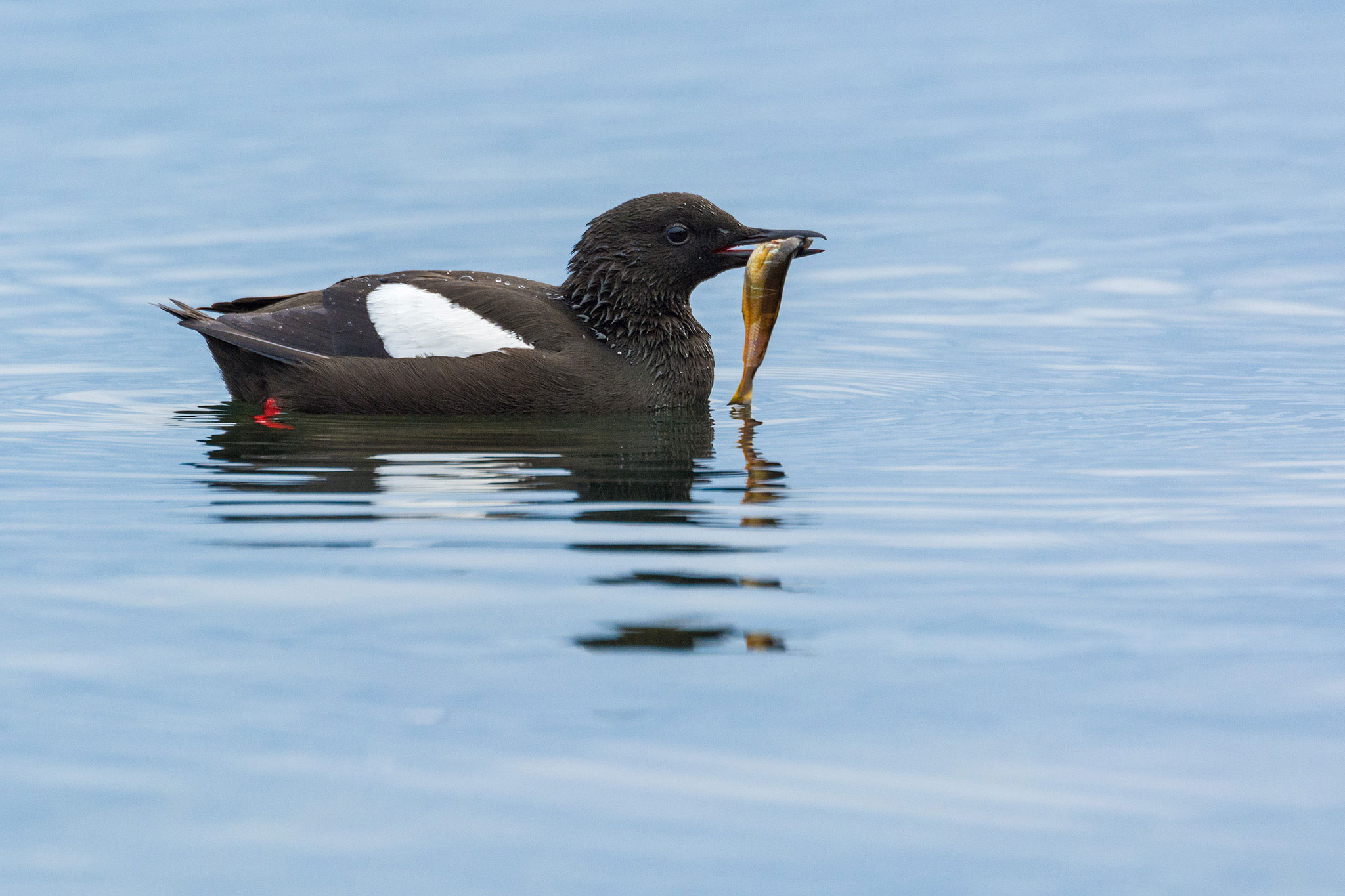For stunning shots of alcids and other ocean-loving species, get in their element.
If you’re looking to photograph puffins, murres, murrelets, guillemots, and auklets on the sea or on perches close to the water, approaching them by boat is the best—and often only—way. Here’s how to get your shot when Photographing Birds from Boats.
Choose the right boat for Photographing Birds from boats
In general, for almost any kind of wildlife situation, the closer a photographer can get to eye level when taking a picture, the more engaging the image will be. When it comes to alcids, although a long lens can give you great in-flight shots from a large boat or even ship, small boats that sit low in the water, such as Zodiacs, are your best bet for getting face-to-face with birds floating on the water’s surface.
Stay dry
Salt water can be very damaging to equipment. If there’s any chance of splashing waves or rough seas, it’s a good idea to protect your camera and lens with a waterproof sleeve, available from companies like LensCoat. En route, keep your gear in a waterproof sack, such as an NRS dry bag, which folds flat or rolls up and doesn’t take up room in a Zodiac’s tight quarters.
Leave the long lenses at home
While the longest lenses, such as the 600mm f/4 or 500mm f/4, are preferred by professionals, they’re also very large, heavy, and expensive, and can be a bit unwieldy on a small boat bouncing around in the ocean. Zoom lenses such as 100-400mm or 150-600mm are well suited for this kind of photography—especially if they’re image-stabilized—and will be easier to handle. A DSLR or mirrorless camera with a good autofocus system that can track moving subjects well and can shoot at a minimum of five frames per second—or preferably faster—will help you capture these speedy birds.
Remain steady
Tripods and monopods aren’t an option on a soft-bottomed boat like a Zodiac. Instead, rest your lens on the boat’s side to stabilize it, and make sure the boat operator cuts the engine before you start shooting so that the vibrations aren’t transmitted to your camera.

Mind your settings
Photographing birds in the water from a boat takes a bit of patience, since both the photographer and the bird are simultaneously moving in three dimensions, often in opposite directions of each other. To minimize any sharpness problems in your photos, your exposures should favor higher shutter speeds—1/1000 of a second or preferably even faster will give you the sharpest shots.
To compensate for the fact that the distance between the camera and the bird is constantly changing, set the camera to the fastest frame rate possible and the autofocus to continuous mode, take a burst of shots, and decide later which is the best and sharpest photo. On cameras where you can move the autofocus sensor position, moving it above the center of the viewfinder will aid in getting the bird properly placed in the frame
Don’t ignore the land-lubbers
Boats are obviously the best vehicle for photographing birds floating on the sea, but they can also give you a terrific vantage point to capture alcids perching on rocks near the water’s edge. Out-of-focus cliffs or vegetation can provide an intriguing alternative to the common blue-water background. A tip: You’ll get a more engaging shot if the bird’s head is parallel to the camera or turned a bit towards it.
Dalat Plateau Birding Herping and Wildlife Tours
The Dalat Plateau, rising 2,000 meters above sea level, is one of Vietnam’s most important [...]
Cat Tien National Park Birding Herping and Wildlife Tours
Cat Tien National Park tours offer an unforgettable experience with sightings of Germain’s Peacock Pheasant, [...]
Western Black Crested Gibbon – Nomascus concolor
Nestled within the verdant landscapes of Vietnam, the Western Black Crested Gibbon (Nomascus concolor) emerges [...]
Northern White-cheeked Gibbon – Nomascus leucogenys
The northern white-cheeked gibbon (Nomascus leucogenys) is a Critically Endangered gibbon species indigenous to South [...]
Northern Yellow-cheeked Crested Gibbon – Nomascus annamensis
The Northern Yellow-Cheeked Crested Gibbon, or Nomascus annamensis, is an exclusive primate species found in [...]
Eastern Black Crested Gibbon – “Cao-vit Gibbon” – Nomascus nasutus
Nestled within the dense, emerald-green forests of Vietnam, the Eastern Black Crested Gibbon (Nomascus nasutus), [...]